Territories Real and Imagined
Mason Riddle offers a round-up of three gallery exhibitions: "LandEscape" at Thomas Barry Fine Arts, "Corridor Views: Industrial Landscapes of Minneapolis and Saint Paul" at Groveland Gallery, and Dietrich Sieling's "Giraffe-man" at Bockley Gallery.
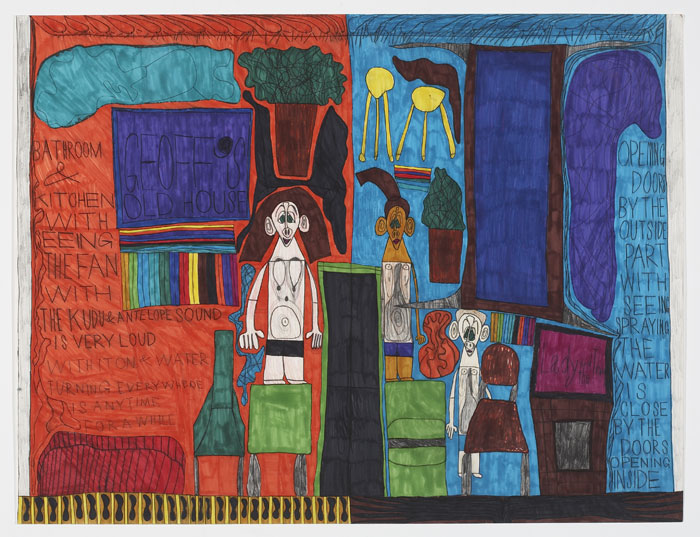
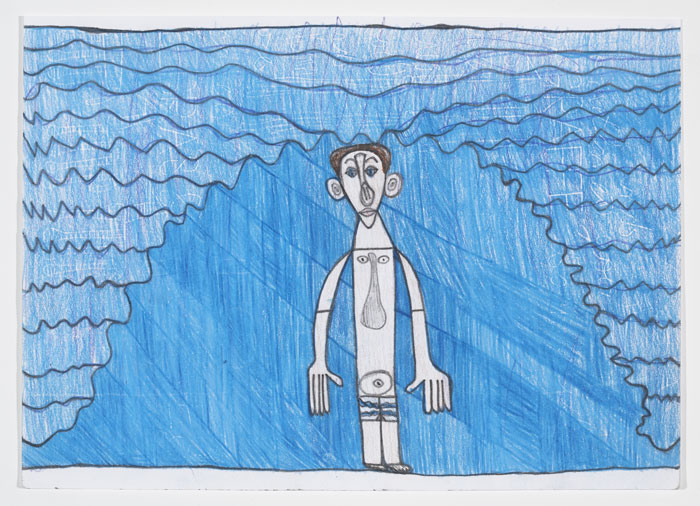
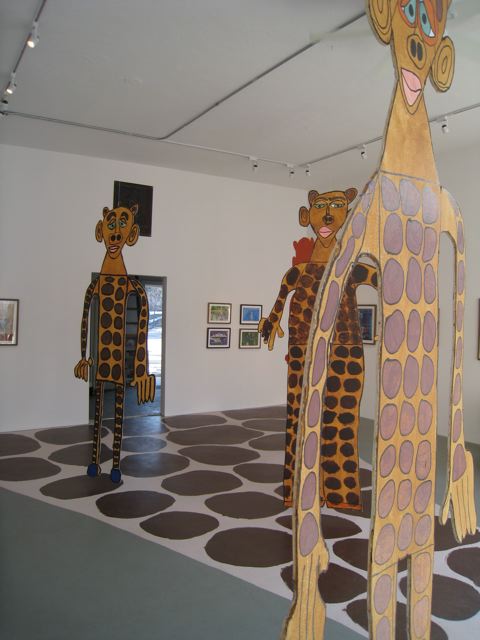
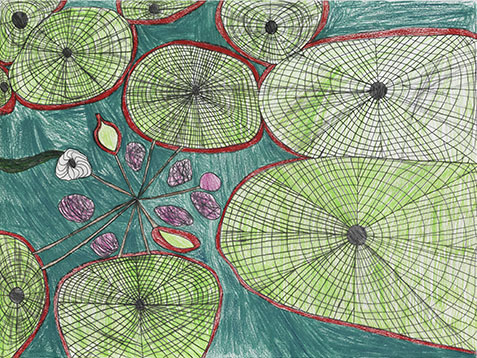
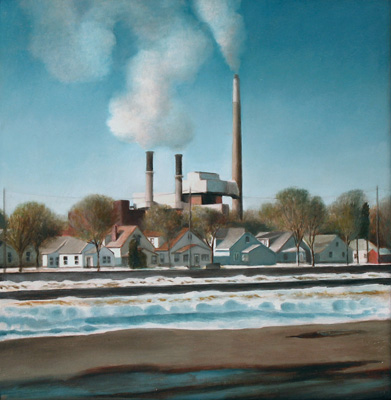
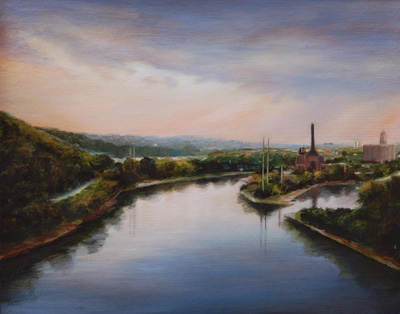
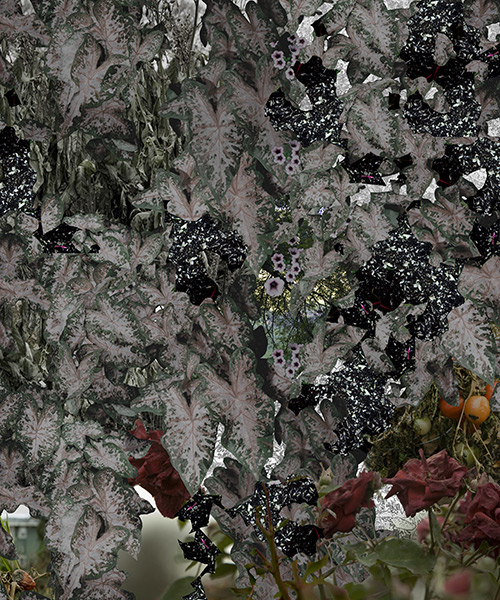
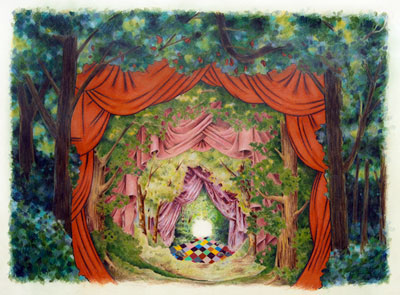
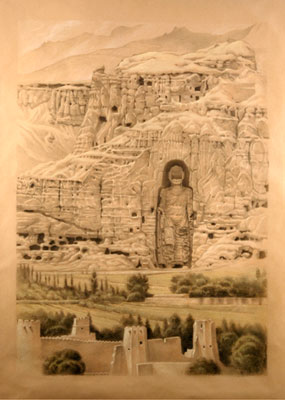
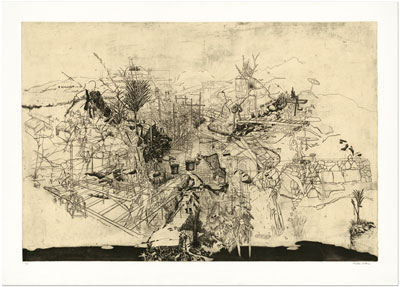
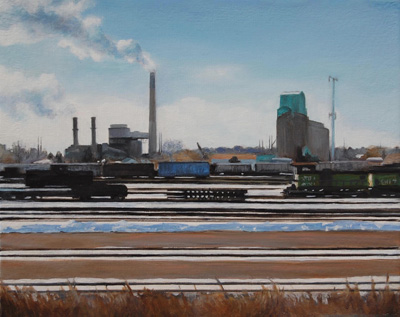
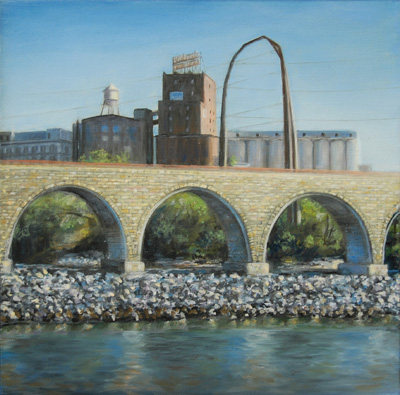
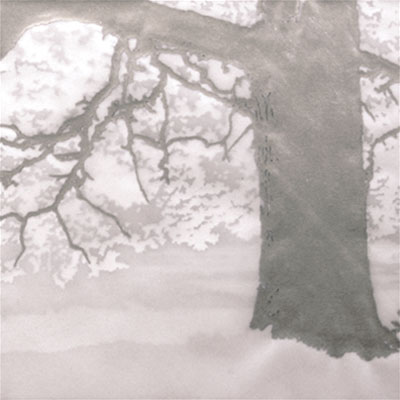
WITH THE ADVENT OF SPRING, SEVERAL FINE MINNEAPOLIS GALLERY EXHIBITIONS have sprung up like inspired flora. Of particular note are two that use the landscape genre as a departure point and a third, which imaginatively explores the self and the interior landscape of the mind. Historically, in Western art, the landscape has been an actual and existential force cultivated by artists, regardless of personal style. For each painting, drawing, print, or photograph that depicts the external, natural world through exacting powers of observation and a deft hand, there is another landscape work whose genesis is internal, materializing from the imagination and inexact recollections of experiences. With these three exhibitions the full gamut is covered.
______________________________________________________
At Groveland Gallery, Michael Banning explores the industrial corridors of the Twin Cities — rail, road, and river — with a meticulous realism. Presenting nearly 20 oil-on-canvas paintings, he gives us variously long views of rail yards, bird’s eye sweeps onto the Mississippi River and unblinking views of nondescript industrial buildings and working-class homes. Several pieces are populated with such industrial icons as the Stone Arch Bridge in Minneapolis, the Landmark Brewery in Saint Paul and a host of grain elevators, reminding us that each day fewer seem to mark the horizon. With each, Banning begins with a photograph and then creates a series of sketches and watercolors, tweaking a detail here or elaborating a detail there, before creating the final oil-on-canvas.
Like the American Scene painters (Robert Henri, George Luks, John Sloan, among others) of the early 20th century, Banning paints with a precise feeling for the subtleties of local color– in this case the greens, browns, greys and blues of the Twin Cities’ sprawling, sometimes stark industrial scape and ever-present river. He also exploits the picturesqueness of the American landscape, like his forbearers, with a tinge of melancholy and psychological emptiness. Like much of Edward Hopper‘s work, Banning’s paintings are devoid of humans, which lends an existential undertow to the normalcy of the built environment he depicts. His work is also is informed by a sophisticated use of natural light, as in Grain Belt Brewery View and High Bridge View — Saint Paul, both of which recall certain sublime views of the Hudson River School painters. Also of particular note is Rail Yard — NE Minneapolis, a small work whose foreground is an abstract amalgam of rails, Grain Elevators near Midway-Minneapolis with its endless view, and Saint Paul Skyline from Empty Lot for the sheer emptiness of the scene. Banning’s is a compelling body of work that makes a convincing case for the continued use and stylistic power of realism when depicting the American landscape.
______________________________________________________
LandEscape at Thomas Barry Fine Arts is a more fantastical embrace of the landscape; even the wordplay in the title suggests our shared need to escape the anxieties of current-day realities. The show features an array of media and styles by artists Richard Barlow, Nick Conbere, Gary Hallman, Medina, Ken Moylan, and Joe Sinness, as well as two impressive, award-winning short videos by Phillip Docken.
Using LP album covers as his point of departure, Barlow appropriates their landscape images, rendering them anew as square-format works in silver metallic leaf on vellum, stripped of any titles or names. The resulting reductive image is ghostly, even eerie; and when viewed in a group of 25, the series accrues a collective visual power that extends beyond any individual work. Devoid of color and text, these no longer suggest particular musicians or songs of an album cover, but exist more like an echo or shadow, evocative of a conceptual, rhythmic passage of time.
Conbere’s prints and drawings offer a complex view of the landscape, one that seems to indiscriminately mix natural and built forms, which suggest unknown places in great flux. Are these utopian vistas of a society being built, or views of dismantling and destruction?
Gary Hallman’s two large-scale inkjet images were inspired by a trip to Tehran’s National Carpet Museum. His are edgeless collages, compositionally complex, digitally ordered images that offer a dense visual layering of exotic flora and indeterminate vistas which are, ultimately, visually confounding but seductive.
Moylan’s drawings of actual historic sites in Afghanistan and Iraq, such as The Great Buddha of Bamiyan, elucidate the disquieting tension between the beauty of these ancient sites and their countries’ war-torn realities. Subtle and ghostly in their execution, the works raise the question: How do such spirituality and violence exist simultaneously?
Sinness’s color pencil on paper drawings are quirky, graphic landscapes that mix a sharp degree of stylistic realism (houses, cars and animals) with highly suggestive but completely indiscernible mounds of – who knows what? The more one strives to identify these forms, the more elusive they become. His Comes and Goes depicts a fairytale-like forest demarcated by layers of richly hued swag draperies that lead to a tunnel of light above a colorful checkered surface, reminiscent of Alice’s rabbit’s hole.
The late French artist Medina’s lone acrylic-on-paper work is a non-objective amalgam of saturated color and loose brush strokes — a magical landscape of fluctuating space expelling a whiff of Tanguy or Matta. Docken’s grainy, poetic videos, The Yellow Forest and Tempo Rubat, are dreamlike and associative. Oblique freeform narratives, these haunting videos explore one’s inner landscape and personal journeys — or even memory — rather than any specific outer reality or chain of events.
______________________________________________________
Likewise, with his site-specific installation Giraffe-man at Bockley Gallery and its accompanying paintings and drawings, artist Dietrich Sieling has created an expressive world populated primarily by hoofed animals and images of himself, rather than by specific elements of the external world around him. Five bold, cut-out figurative forms — part human, part fauna — are suspended from the ceiling. A curving path of large brown spots on a pale ground is painted on the floor below. As the air currents slowly turn the outsized, partially-spotted figures, the human and animal aspects of each coalesce into one, creating a completely new nature-based entity, a modern-day satyr. Rooted in the artist’s deep affinity for hoofed animals of the African continent, these graphic sculptures take on a visionary, alter-ego persona. His drawings on paper are exuberant, a rush of abstract lines, forms, and figures which are often overlaid with passages of text. Like the sculptures, Sieling’s drawings reveal an inventive, wide-ranging creative process and a keen color sense. His mixed-media Water Lilies is an addictive mix of red and green, while Geoff’s Old House expertly synchronizes every color in the rainbow. Blues and oranges pick no fight with neighboring pinks, purples and yellows. Ultimately, Giraffe-man is a dynamic, highly individualistic offering of personal, spirited drawings and sculpture, making the fact that Sieling is a 21-year old, autistic man all but irrelevant.
About the writer: Mason Riddle is a critic and writer on the arts, architecture, and design. She is the current president of the Visual Arts Critics Union of Minnesota.
Exhibition dates and details:
LandEscape, a group show featuring work by Nick Conbere, Richard Barlow, Gary Hallman, Ken Moylan and Joe Sinness, will be on view at Thomas Barry Fine Arts in Minneapolis through April 11.
Giraffe-man: Dietrich Sieling, an installation of sculpture, paintings and drawings, will be on view at Bockley Gallery in Minneapolis through April 4.
Corridor Views: Industrial Landscapes of Minneapolis and Saint Paul, paintings by Michael Banning, will be on display at Groveland Gallery through April 11.